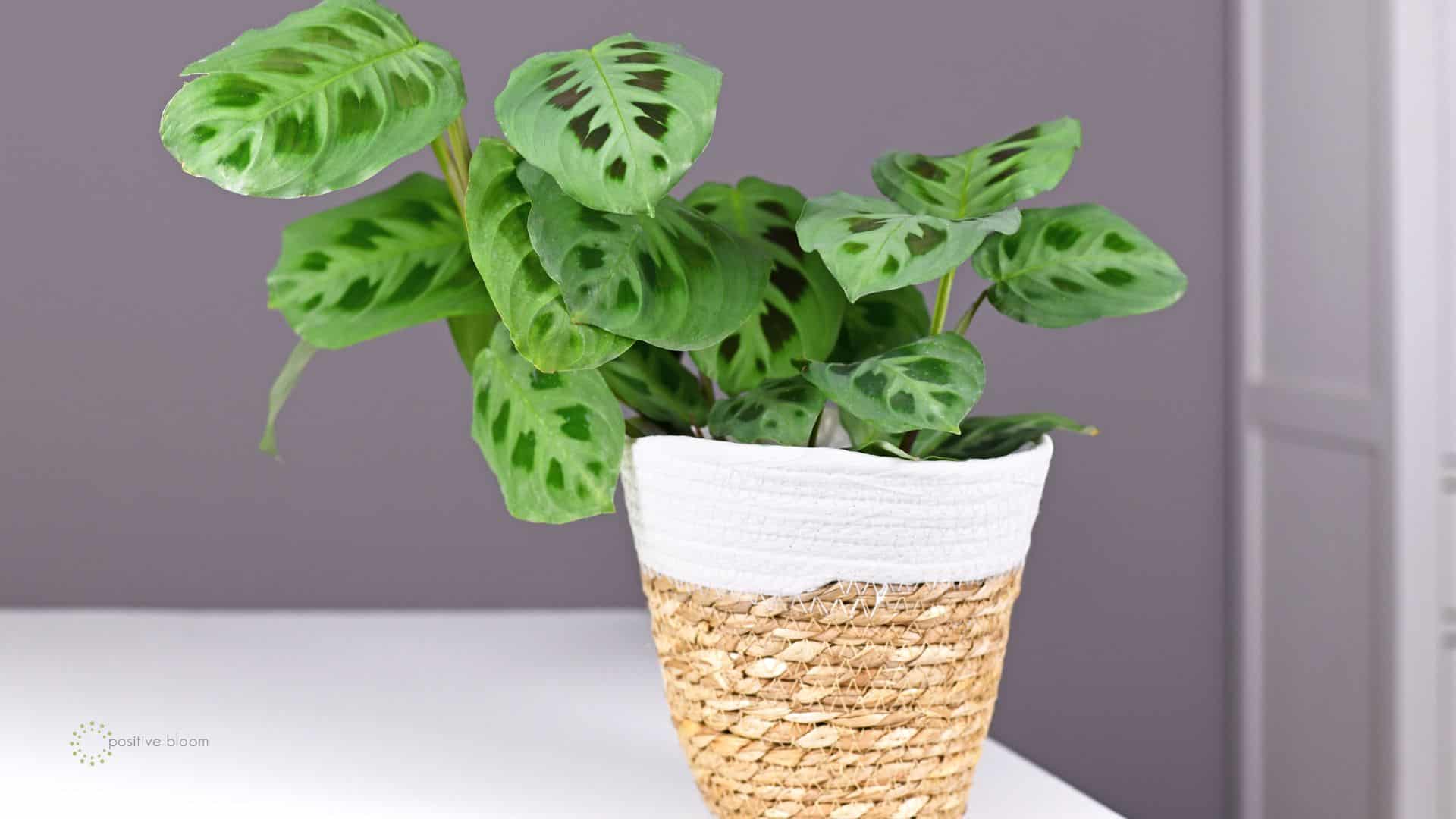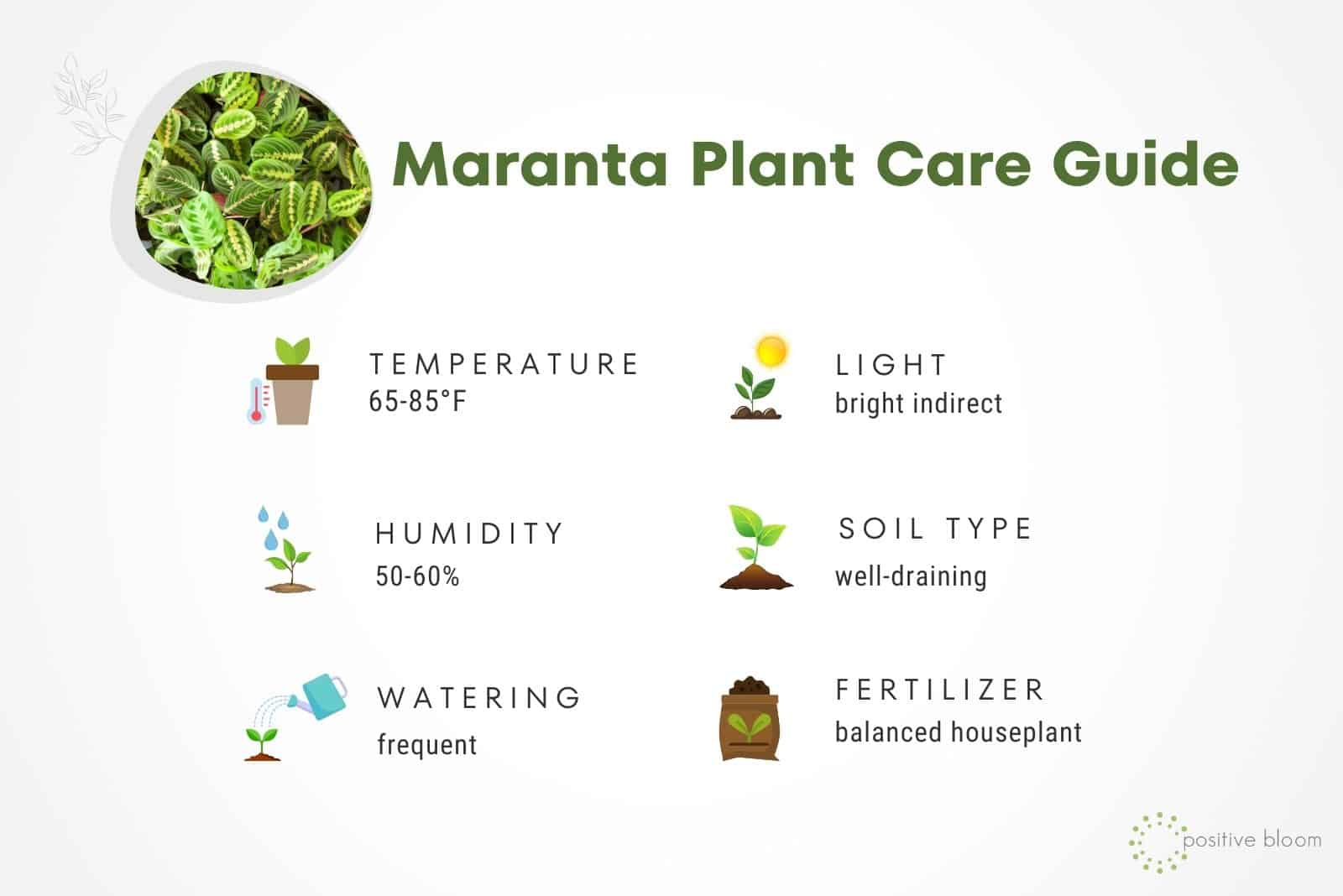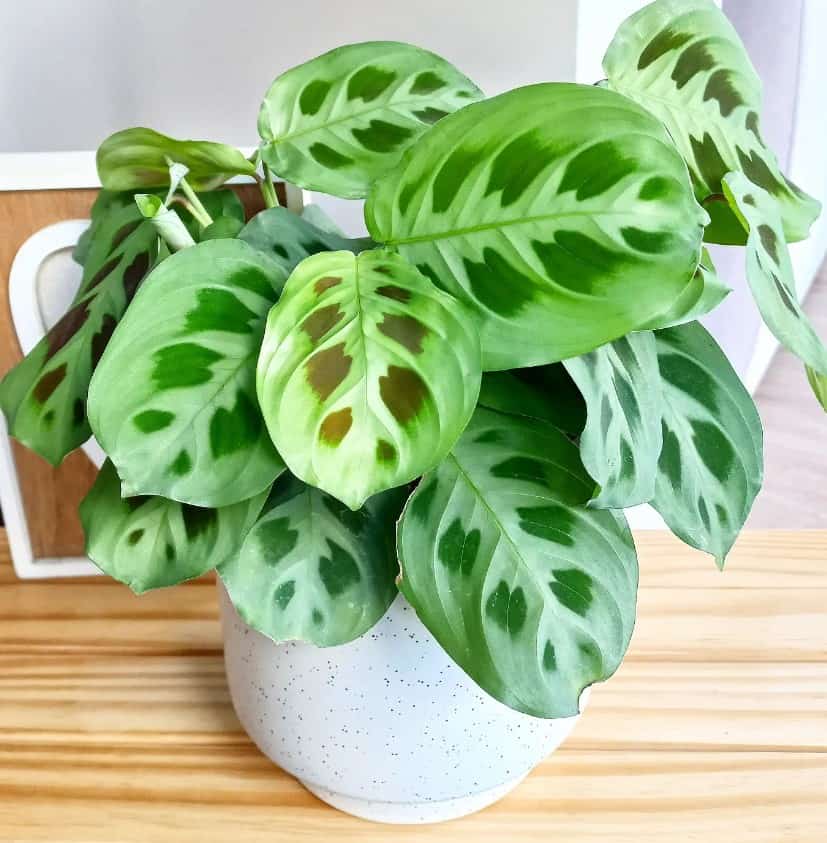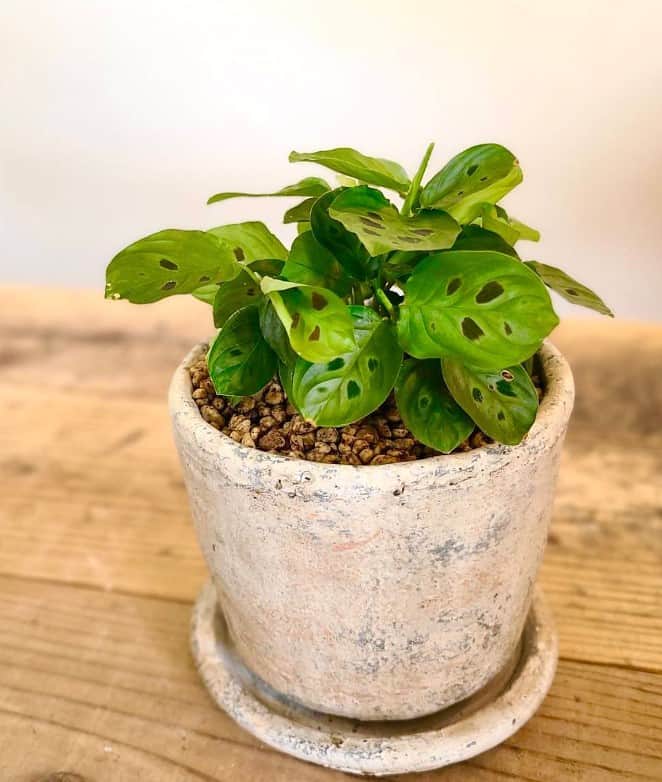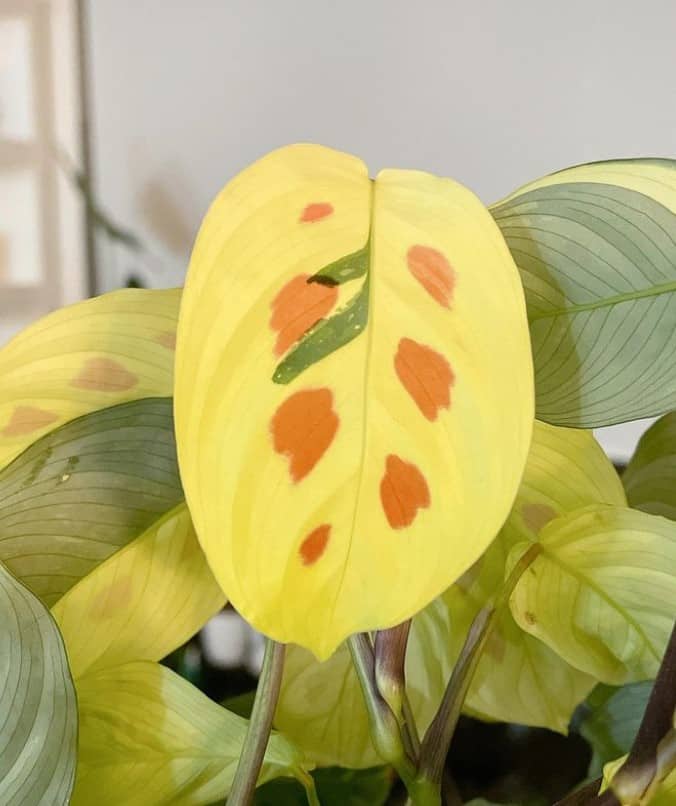Today we’re going to look at yet another Prayer plant variety!
The Maranta leuconeura Kerchoveana, otherwise known as the Rabbit’s foot, is a tropical plant that originates from deep Brazilian rainforests. Nowadays, these lovely plants are widely grown indoors!
This relatively low-maintenance plant produces bright green leaves with deep green to burgundy patches on their surfaces. The lovely oval-shaped leaves tend to fold during the nighttime and reopen in the morning, which makes it look like the plant is praying, hence the nickname, “Prayer plant”.
Here’s some basic info:
[table id=705 /]
If you want to find out more about this unique plant and learn how to take care of it, keep reading!
What Is The Maranta Leuconeura Kerchoveana?
The Maranta leuconeura Kerchoveana is an evergreen perennial plant that belongs to the Marantaceae family. This plant produces ovate green leaves with deep green variegations. They look like rabbits’ paws, which is why these plants are called “Rabbit’s foot”.
What’s interesting about these leaves is that they tend to close during the night and then reopen in the morning. This unique phenomenon when Prayer plants close at night is called “nyctinasty”.
These plants change their state continuously because they move in accordance with the circadian rhythm, just like us. Pulvini are specialized cells that cause these changes [1].
Compared to other Prayer plants, this Maranta species is quite small. They usually grow up to 15 inches tall, which is why they are great for filling out small empty spaces.
In perfect conditions, these plants will produce lovely white flowers (although this happens rarely indoors).
Maranta Plant Care Guide
Taking care of these prayer plants is relatively easy. All you have to do is make sure that they are nice and warm, and also give them water every now and then. Proper drainage is also very important in the Maranta plant care guide.
Now, let’s talk about prayer plant care in more detail!
Water Requirements
Satisfying your plants’ watering needs is key to having happy and healthy plants. Since we are talking about tropical plants, getting the right watering schedule can be somewhat difficult. This is because they require moist soil that’s neither soggy nor dry.
There is a fine line between moist soil and soggy soil, which is why you have to be extra careful when watering.
Checking the soil before watering is one of the best pieces of advice I can give you. Simply see if the topsoil has dried out before watering – if so, then go ahead and water your plant. If not, postpone watering for a few days.
Your Maranta will need more water in the warmer summer months and less water while it’s dormant. Maranta plants are extremely delicate and can be harmed by a variety of minerals and other substances found in tap water, so the type of water you use must also be considered.
I advise using distilled or rainwater since they don’t contain substances like fluoride or chlorine.
Soil Requirements
I mentioned that proper drainage is crucial and can be achieved by providing your plants with the right soil type. Whether you are growing a Calathea or any other Prayer plant, well-draining soil is a must.
Adding soil additives such as peat moss and perlite can improve the quality of soil greatly. You can prepare your own high-quality soil blend or purchase one at a nearby nursery or gardening store. Simply combine two parts peat moss, one part perlite, and one part potting soil.
The Maranta leuconeura Kerchoveana also likes slightly acidic soil with a pH level of around 6.0, so keep that in mind as well!
Also, if you’re making your own potting soil for this plant, you can enrich it with worm castings to increase its fertility.
Light Requirements
You can’t expose those lovely green leaves to direct sunlight, or you’d end up with burnt leaves!
Put your plant in a location with enough bright indirect sunlight instead. This will lead to a glowing and thriving plant!
I keep my Calathea white star next to an east-facing window, and let me tell you it just keeps on growing and growing. This is because the plant receives a tiny bit of direct sunlight in the morning (totally harmless!) and for the rest of the day it has plenty of bright indirect sunlight!
However, if you don’t have enough space next to an east-facing window, a west-facing one would do just fine – just make sure to keep your plant 2 or 3 feet away from it or consider putting up sheer curtains.
Lastly, rotate the plant every now and then so that all of it receives some sunlight.
Fertilizer Requirements
Besides watering, drainage, and lighting conditions, giving your plants some plant food is also an important item in our care guide. Even though these plants are not heavy feeders, they will still benefit from some extra nutrients and minerals.
The Maranta leuconeura Kerchoveana should be fertilized during the growing season, which is from spring to fall. I would recommend you use regular balanced houseplant fertilizer once or twice a month during the growing season.
I often use water-soluble ones to prevent fertilization burns. Still, you shouldn’t dilute it all the way as it would only defeat the purpose and no nutrients would reach your plant’s roots.
Avoid fertilizing during the winter months because your plant enters dormancy during this time. This means that your plant won’t need much watering or many nutrients to survive.
If you’ve recently replanted your plant, be cautious when fertilizing. As many potting soils from stores come with extra nutrients that might last up to six months, feeding your plant any more will result in fertilizer burn.
Temperature Requirements
As I already mentioned, these tropical beauties like it nice and warm. These plants thrive in temperatures between 65 to 85 degrees Fahrenheit.
They can even endure temperatures as low as 40 degrees Fahrenheit, though any temperatures above 90 degrees Fahrenheit would simply be too hot to handle.
Keep your prayer plant away from drafty areas like near old windows, air vents, heaters, doors, hallways, and any other places where there are sudden changes in temperature. These temperature fluctuations might be harmful to your plant.
Humidity Requirements
The best plant care involves mimicking the plant’s natural habitat, and you probably already know that tropical regions are rather humid. Maranta plants require humidity levels of around 50-60%, which is why you will have to find a way to boost indoor levels.
If you don’t mind spending some money, I would recommend you get a humidifier. However, there are also cost-free methods that you can employ to improve humidity. This includes misting your plants regularly.
You can also get creative and make a pebble tray by simply adding some pebbles to the bottom of a tray, covering them with water, and putting your plant on top of the tray. As the water evaporates, it will create enough moisture for your plant.
Relocating your plant to the room with the most humidity in your house might also help (just keep in mind the preferred air moisture levels).
Pruning
Pruning is not necessary since these plants usually don’t grow very tall. Still, you can prune your plant to keep it looking nice and tidy.
You can trim your prayer plant whenever you want because you won’t ever need to remove a lot of foliage. (You can propagate it if you take a few nodes with leaves and stems, but we’ll cover that in more detail below.)
Also, you should remove any old, sickly, or decaying leaves as soon as you see them because they only take up space where new leaves could grow.
Repotting
These plants are not fast growers, which means that you won’t have to repot them every growing season. They usually need to be repotted every 2-3 years.
Once you notice that your plant has stopped growing or that the roots are coming out of the drainage holes, it is time to repot your Maranta.
When repotting, use a plant pot that is 1-2 sizes larger than the old one and make sure it has at least one drainage hole. While these Prayer plants don’t have deep root systems, be careful that the container isn’t too deep.
Take it out of the planter first, and if the roots are too tangled, you can separate them a bit. After that, plant your plant in the new container and fill it with a potting mix.
Propagation
Even though these plants have nicknames involving rabbits, they don’t multiply like them! You will still have to go through the entire process of plant propagation. The best plant propagation methods for these Prayer plants include stem cutting and root division.
You can also check out this propagation video:
Propagation By Stem Cuttings
1. Look for a healthy stem on the plant.
2. Cut just below the node.
3. Put the cutting in water.
4. Place it somewhere with enough bright indirect light.
5. Change the water every other day.
6. Your plant can be transplanted into the potting soil once the roots are no longer translucent.
Propagation By Root Division
1. Remove the plant from the container and look at the stems. You can split apart any clumps and use them for propagation.
2. Untangle the roots first. If it’s rather difficult, cut them with sterile scissors instead of pulling them.
3. Put the plants into different pots with adequate soil. Water them thoroughly,
4. Place them in an area with sufficient humidity and indirect sunshine, and take care of them as you would any other prayer plant.
Common Issues With The Maranta
If you don’t stick to a good plant care guide, you will be the one praying in the end! This is because inadequate plant care weakens the plant’s health, which ultimately makes it susceptible to pests and diseases.
Sometimes the disease might progress quickly, so you will have nothing else to do but pray for your plant. To make sure that doesn’t happen, take good care of your plant and always be on the lookout for signs of discomfort. In most cases, your plant will tell you if there is something wrong.
Let’s look at some of the common issues and how to fix them.
Leaves Changing Color
Leaf discoloration is often a telltale sign that your plant is hurting. Pale yellow leaves mean that your plant needs more light, and also that your plant might need more nitrogen. This is because nitrogen makes up part of the chlorophyll in plants, so don’t forget to fertilize [2].
If your plant was exposed to direct sunlight for too long, crispy yellow leaves with brown spots might appear. Simply put it somewhere with less direct sunlight exposure during the day.
If you have just repotted your Maranta, you might notice that some leaves have dried or changed color. Nothing to worry about here, it just means that your plant needs some time to adapt.
Leaves Changing Shape
Curly and droopy leaves are also signs that your plant is going through something. Low humidity, bad lighting, and lack of plant food are often to blame for this issue.
Prayer plants might be drooping due to insufficient irrigation, poor lighting, inadequate fertilization, hot or cold temperatures, or the fact that your plant is rootbound. Retrace your steps and inspect the plant a bit more to get to the bottom of this issue.
If your Maranta’s leaves start to curl, the most common causes include low humidity and sudden temperature changes. All is not yet lost and your plant’s leaves might uncurl if you keep the temperature between 65 to 85 degrees Fahrenheit and put it somewhere less drafty.
Pest Infestation
Unfortunately, you are not the only fan of your plant! There are numerous little pests and insects that love to munch on those beautiful juicy leaves. The most common critters include mealybugs, whiteflies, aphids, and thrips.
If you notice that there is something crawling all over your plant, or that bugs have settled in on the undersides of the leaves, then you are dealing with a pest infestation.
The first thing you should do is identify these little pests. If they are white and almost invisible to the naked eye, then you are dealing with aphids. Mealybugs are likely to blame if you see a white, fuzzy substance on your plant’s leaves.
The most important thing is to take action as soon as you identify the infestation so as to prevent it from spreading to your other plants and doing more harm.
The good news is that you can get rid of them quickly using insecticides or horticultural oils such as neem oil. Stick to the instructions displayed on the packaging to avoid burning your plant.
Plant Disease
Root rot is your plant’s worst enemy. This fungal disease is brought about by overwatering, and it can completely devour your plant to the point it can no longer be saved.
Droopiness, yellow leaves, stunted growth, and a bad odor coming from the pot are signs of root rot disease. In this case, you should repot the plant.
Inspect the plant’s roots and remove any black, mushy ones that have started rotting. After that, you can apply fungicide to stop this nasty fungus from reappearing so quickly, and then put the plant into a fresh, clean container that is packed with new substrate.
To Sum Up
The Maranta leuconeura Kerchoveana is truly a remarkable plant.
Keep an eye on the watering schedule and make sure that they are nice and warm. Give the plant some fertilizer to boost its growth and repot it once it gets rootbound. Check for pests and insects regularly.
That’s all, folks. I hope this article was helpful.
Until next time!
References
1. Ueda, M., Ishimaru, Y., Takeuchi, Y., & Muraoka, Y. (2019). Plant nyctinasty–who will decode the ‘Rosetta Stone’?. New Phytologist. 2. Daryl Buchholz. Nitrogen in the Plant. University of Missouri.

